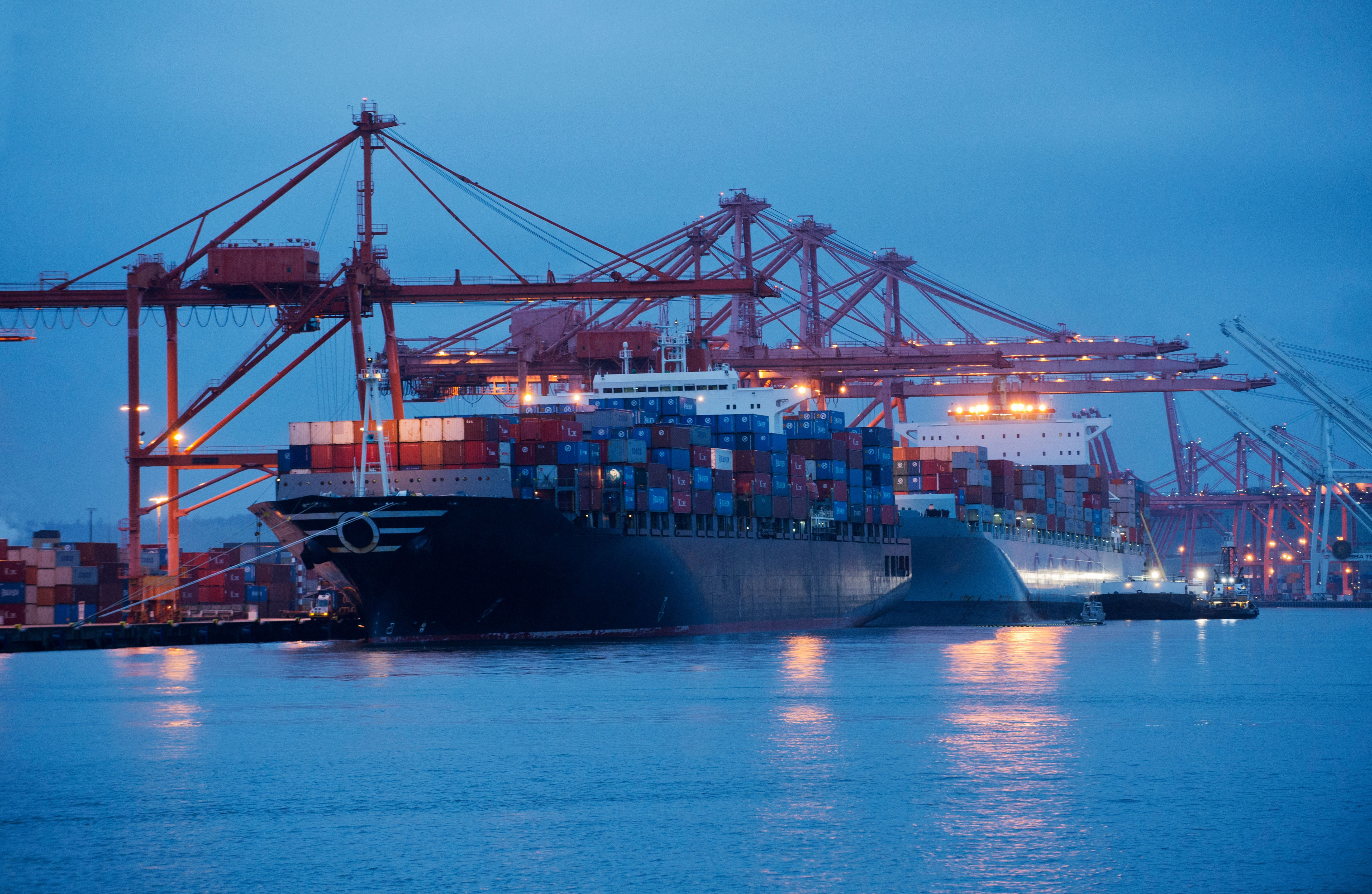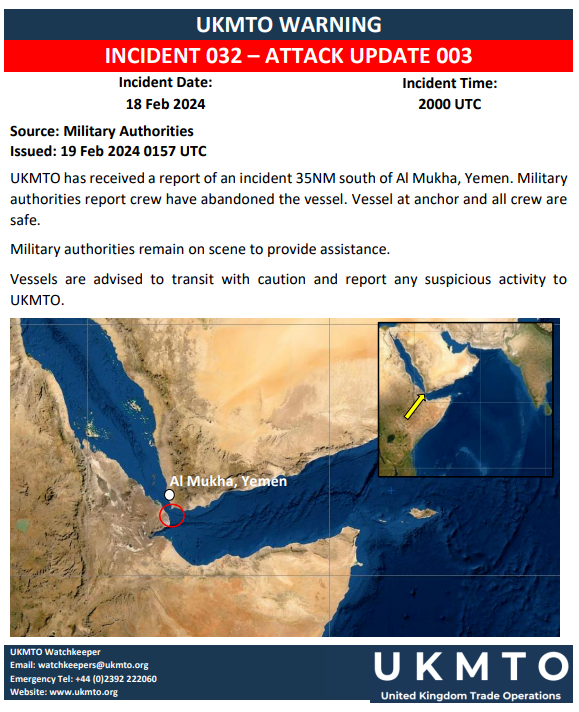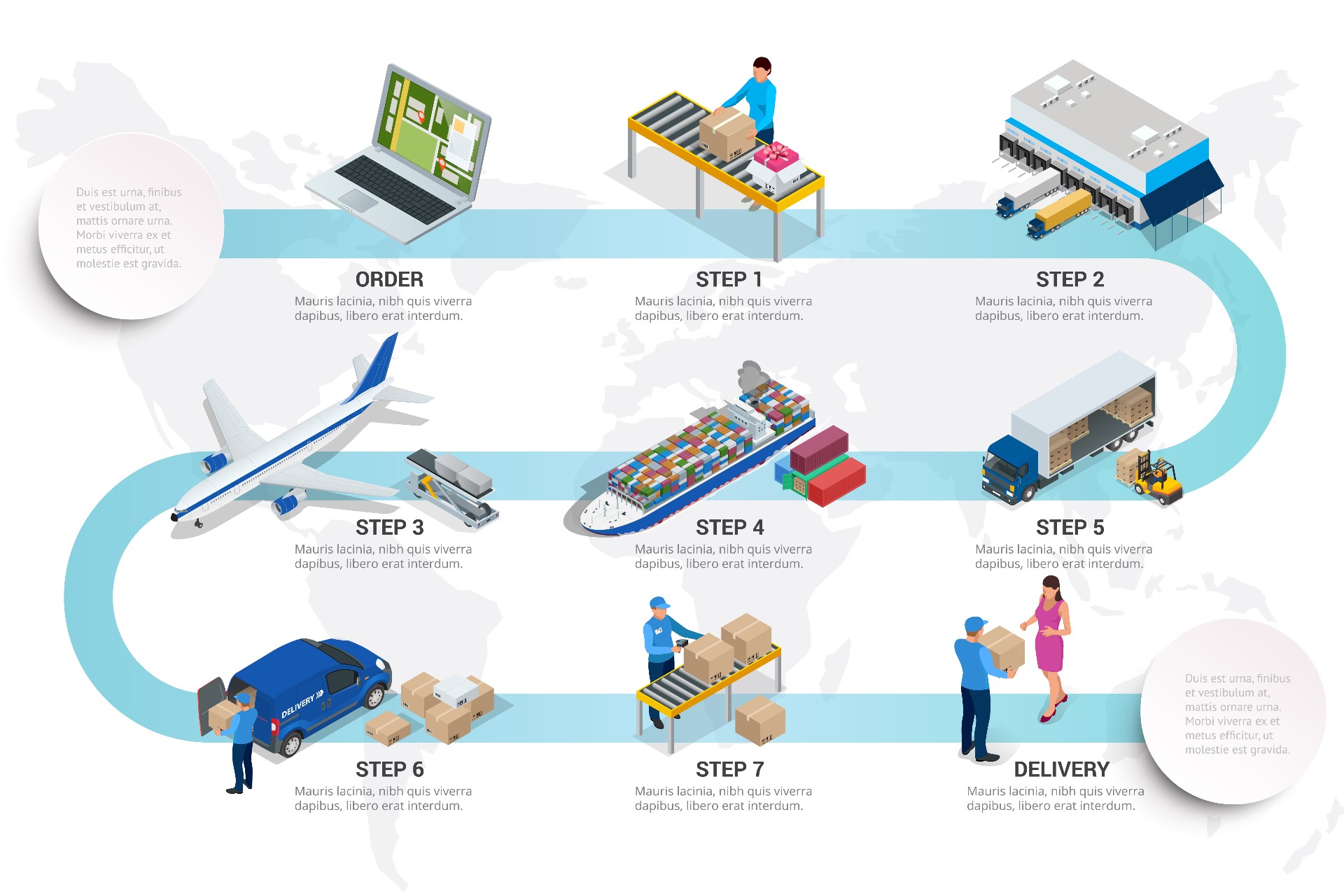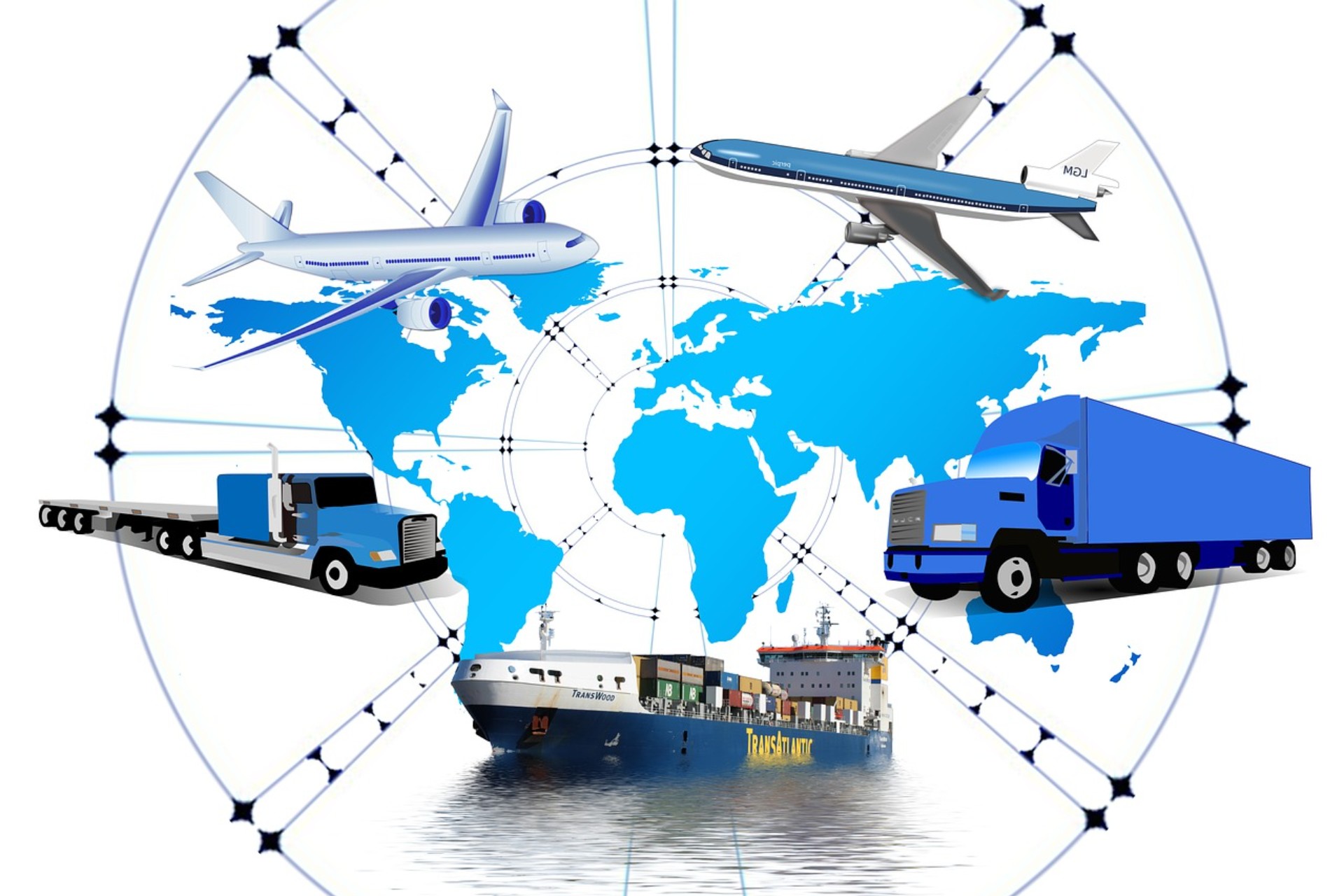This issue introduces to you - international ocean shipping !!!

Ocean Freight is broadly defined as all sea-related transportation operations. But up to now, what we call maritime transportation generally refers to maritime transportation, such as bulk cargo transportation, container transportation and other port-to-port maritime transportation. International shipping usually refers to cross-sea and trans-oceanic transportation between countries and continents. With the continuous development of the shipping industry, especially the maturity of multimodal transport, the definition of maritime transport in the future will run through sea and land, and it is expected to develop into a transportation industry integrating door-to-door ocean and land transportation.
Route classification
According to ship operation mode
Scheduled routes refer to routes that use fixed ships, sail according to fixed sailing dates and ports, and operate passenger and cargo transportation business at relatively fixed freight rates. Regular routes, also known as liner routes, mainly carry groceries.
Unscheduled routes are routes selected temporarily based on cargo needs. The ships, sailing schedules, calls and ports are not fixed, and it is a route mainly engaged in bulk and low-cost cargo transportation business.
According to the distance of the voyage
OCEAN-GOING SHIPPING LINE refers to transportation routes with long voyage distances and ships sailing across the ocean, such as routes from the Far East to Europe and America. Our country customarily uses the Port of Aden as the boundary and classifies the routes to the west of the Port of Aden, including both sides of the Red Sea and the vast areas of Europe and North and South America, as ocean routes.
NEAR-SEA SHIPPING LINE refers to the collective name for maritime transportation routes between domestic ports and ports in neighboring countries. Our country has customarily called the routes in Asia and Oceania east of the Port of Aden as near-ocean routes.
COASTAL SHIPPING LINE refers to the maritime transportation routes between various coastal ports in the country, such as Shanghai/Guangzhou, Qingdao/Dalian, etc.
According to the scope of navigation
Atlantic route, Pacific route, Indian Ocean route, global route.
Cost calculation
There are usually two ways to calculate shipping costs: one is FCL calculation, which is the cost for a customer to own an entire container; the other is LCL calculation, which is the cost for sharing a container with other customers.
Full box calculation
FCL sea freight = basic sea freight + port surcharge + fuel surcharge.
1. Basic freight: basic freight = basic freight per unit × number of whole boxes.
2. Port surcharge = port surcharge per unit x number of full containers.
3. Fuel surcharge = fuel surcharge per unit x number of whole containers.
LCL calculation
LCL shipping cost = Calculate the volume and weight separately and take the maximum cost (volume weight).
1. Calculated by volume = basic unit freight × total volume (unit of measurement: CBM – cubic number) (the minimum charge for sea freight LCL is 1CBM, which means that your goods must be charged at 1CBM if they are less than 1CBM).
2. Calculation by weight = basic unit freight × total gross weight (unit of measurement: TON - ton) (the minimum charge for sea freight LCL is 1 TON, which means that your goods must be charged at 1 TON if they are less than 1 TON).
The difference between FCL and LCL shipping
In addition to the different pricing methods, the difference between FCL shipping and LCL shipping is also reflected in customs clearance. Since the whole container of goods meets the minimum unit of customs inspection, sealing and release of the exporting and importing countries, as long as the importer and exporter submits the corresponding documents in accordance with the corresponding requirements of the customs, it can be released after passing the requirements; while LCL can be released due to the One container contains goods from multiple companies, so all documents need to be stored and submitted separately. If the goods of one of them fail to pass customs inspection, all the goods will not be cleared. Therefore, when choosing a shipping mode, you must make a comprehensive plan based on your own needs.
Additional fees
In addition to the relevant fees mentioned above, freight forwarders will also charge additional fees based on the actual situation of different customers:
1. Warehousing fee: Before boarding the ship, LCL customers need to deliver the goods to the designated warehouse. After that, the freight forwarder is responsible for packing, entering the port, customs declaration and other operations. At this time, a warehousing fee will be charged.
2. Customs declaration fee: When exporting customs declaration, the customs broker will charge agency customs declaration service fee.
3. Lost shipping fee for sea freight LCL: In the process of sea freight LCL export, after the specified time line on the working day before the order cut-off date, the goods cannot be shipped in time due to the reasons of the booker, resulting in the LCL company's space being vacant.
4. Unpacking fee at the unloading port: After the sea freight goods arrive at the destination, the carrier will unpack the container goods according to the consignee's situation, and the costs incurred must be borne by the consignee.
5. Distribution fee: Distribution fee is generated when the carrier unpacks and separates the goods in a bonded warehouse. It is usually calculated by billing ton, and some have minimum billing standards.
6. Low sulfur fuel surcharge (LSS): A surcharge charged to make up for the increased cost of using low sulfur fuel for ships sailing in the new sulfur oxide emission control area.
7. Currency depreciation fee (CAF): Due to changes in the exchange rate in the international financial market, the currency used to calculate freight charges has depreciated. The shipping company adds a surcharge to compensate for the losses in the currency exchange process.
8. Other common surcharges: surcharges derived from cargo characteristics, such as overweight, overlength, and oversize surcharges; surcharges derived from transportation and port reasons, such as direct shipping surcharges, transshipment surcharges, and port surcharges. etc.; temporary surcharges, such as port congestion surcharge, deviation surcharge, unloading port selection surcharge, change of unloading port surcharge, peak season surcharge, etc.; surcharges derived from other reasons, such as container imbalance surcharge, safety Surcharges, inland fuel surcharges, etc.
If it is uncertain whether the shipping surcharge should be included in the dutiable value, you can apply for a price advance ruling to the local customs.
Common container types
When companies that require full-container transportation need to customize containers, they need to select containers of the appropriate size based on the size and weight of the product. Common containers include the following types:
20-foot container (20'GP): The maximum usable volume in the container is generally about 26 cubic meters;
40-foot container (40'GP): The maximum usable volume in the container is generally about 54 cubic meters;
40-foot heightened container (40'HQ): The maximum usable volume in the container is generally about 64 cubic meters.
The maximum loading volume is related to the cargo size and packing equipment restrictions, and the maximum loading weight is related to the line and shipping company weight limit requirements.
International shipping process
The seven steps of international shipping are: export consignment, origin processing, export customs clearance, ocean transportation, import customs clearance, destination processing and import consignment.
Export consignment
The first part of transportation is export transportation. This involves the movement of goods from the shipper to the forwarder’s premises. For goods less than a container load, the freight forwarder's premises is always the export consolidation center (origin warehouse), where the freight forwarder has its own personnel or a designated agent. Freight is typically transported by road (by truck), rail, or a combination. If it is agreed that the shipper will be responsible for this portion of the shipment, arrangements will usually be made through a local carrier.
Export customs clearance
Every piece of goods exported must go through customs formalities to meet regulatory requirements. Customs clearance refers to the procedures that must be performed in accordance with various laws, regulations and regulations when import, export or transshipment goods enter or leave a country's customs territory. Export clearance steps must be completed before the goods leave the country of origin, and if not completed by the freight forwarder, usually before the goods enter the freight forwarder's origin warehouse.
Origin processing
Origin handling covers the handling and inspection of all goods from receipt at the origin warehouse to loading into containers for shipment. When the freight forwarder receives the cargo, it needs to be inspected (tallyed), planned for loading, consolidated with other cargo, loaded into containers and then transported to the port for loading. During these processes, the costs incurred are paid by the shipper or consignee.
Ocean Shipping
The freight forwarder decides to select a shipping company to perform ocean freight from origin to destination to meet the required schedule for the shipment. Freight forwarders have container shipping contracts with shipping lines, in which case the shipper or consignee does not have any direct interaction with the shipping line.
Import customs clearance
Import customs clearance can usually begin before the goods arrive in the destination country. Import customs clearance is handled by the freight forwarder or its agent, or the customs broker designated by the consignee. The import customs clearance procedure must be completed before the goods leave the bonded area of the destination country, which can also be understood as the import customs clearance needs to be completed before the goods leave the destination warehouse of the freight forwarder.
Destination processing
Destination handling involves the transfer of containers from ship to shore and from port to the freight forwarder’s destination warehouse. It also includes unloading containers and preparing goods for pickup by the consignee.
Import transportation
The final leg of transportation is the actual delivery of the goods to the consignee. It can be performed by a freight forwarder or a local transportation company designated by the consignee. If this portion of the shipment is arranged by the shipper, it often makes sense to use a freight forwarder who can also arrange import shipments. Import shipping usually includes shipping to a specific address but does not include unloading the truck, which is the responsibility of the consignee.






















